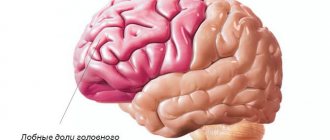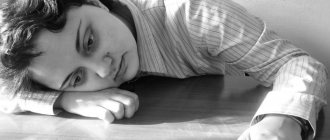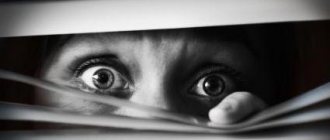There are a huge number of myths and misconceptions about psychiatry among people. As a practicing doctor, I encounter this phenomenon all the time. You can hear so many ideas and suggestions for treatment from patients and their loved ones!
Just a few days ago, the mother of a patient suffering from schizophrenia suggested that her daughter undergo an “intestinal drainage” in order to “get rid of the sludge that leads to hallucinations.” Another mother of a mentally ill patient insisted on massage of the prostate gland for approximately the same purpose. I am even afraid to count how many proposals I have listened to regarding the treatment of mentally ill patients with urine therapy, honey, mud, physical activity and diets.
More than once I was asked to “scare the patient more strongly” - “because stress will make the disease go away,” they insisted on immersing the patient in ice water on the feast of Epiphany. And the rituals of reprimand or exorcism of the most varied scale... I think that if I followed the lead of these well-wishers, I would risk ending up in the hospital or, what’s the best, behind bars. It would be difficult to explain to “competent comrades” why I immersed a sick person in wormwood against his will... A lot of myths and misconceptions are associated with schizophrenia. As often as not, “in the world” our patients are called “crazy”, “fools”, “seizures” - without even imagining the essence of the changes happening to them, and therefore without understanding the peculiarities of their behavior, views on life, the world around them. This is called stigmatization: in essence, people deny patients the same rights as others - only due to a lack of understanding of their illness.
I will try to lift the veil of misunderstanding a little and tell you what actually happens to mentally ill people, using the example of one of the most common and severe phenomena in psychiatry.
Kandinsky-Clerambault syndrome (mental automatism syndrome; external influence syndrome, influence syndrome, alienation syndrome, mastery syndrome) is a psychopathological symptom complex manifested by alienation or loss of belonging to one’s own mental processes (mental, sensory, motor) in combination with a feeling of influence some outside force; accompanied by delusions of mental and physical influence and (or) delusions of persecution, perceptual disorders. Mental automatism syndrome can be observed in various mental illnesses: alcoholic, traumatic, vascular, infectious psychoses. It is most characteristic of schizophrenia, especially its paranoid form, and almost always indicates an unfavorable prognosis for the course of the disease.
"Hunters" and victims
The first comprehensive description of the symptoms of this disorder belongs to the Russian psychiatrist Viktor Khrisanfovich Kandinsky (1849–1889), who in 1880 published a chronicle of his own illness, “On the Doctrine of Hallucinations,” where he gave a detailed description of the observed mental disorders. In 1881, a German translation of the book was published, which quickly received responses in Germany and France.
Almost 40 years later, Gaëtan Henri Alfred Eduouard Léon Marie Gatian de Clérambault (1872–1934), a French psychiatrist, compiled a classification of the symptoms identified by Kandinsky and combined them into a syndrome, which he received name: Kandinsky-Clerambault syndrome.
Thus, Kandinsky and Clerambault independently described the syndrome of mental automatism. It is noteworthy that both psychiatrists analyzed and described their own painful experiences. They were both sick, and both eventually led to suicide.
Characteristic pathologies
The syndrome of mental automatism is most characteristic of schizophrenia, especially its paranoid form[5], and has an unfavorable prognosis. Cases of the occurrence of individual automatisms in somatogenic diseases and intoxications have been described; thus, this syndrome is not pathognomonic for schizophrenia[6].
In most cases, the appearance of this syndrome is associated precisely with schizophrenia, which is especially characterized by ideational automatisms, which in ICD-10 are considered as one of the most important signs of this disease [6].
Symptoms of Kandinsky-Clerambault syndrome
This is a feeling of alienation from one’s own mental processes, of mastery by someone from the outside. Arises as a result of delusional ideas about the imaginary impact on the patient (for example, radiation or ultrasound).
Ideatorial, or associative, automatisms are the result of an imaginary influence on thinking processes and other forms of mental activity.
These include:
Mentism is a violent influx of thoughts and images beyond the patient's control.
A symptom of openness of thoughts is the feeling that thoughts are known to others.
“Thought withdrawal,” in which the patient’s thoughts “disappear” from the head.
“Made thoughts” is the belief that his thoughts belong to strangers, most often his persecutors, and are put into the patient’s head.
“Unwinding of memories”: patients, against their will and desire, as if under the influence of an outside force, are forced to remember certain events of their life; Often, at the same time, the patient is “showed pictures” illustrating memories.
The phenomenon of “made moods, feelings, dreams”: patients claim that their moods, feelings, likes and dislikes are the result of external influences. For example, there is a feeling that emotions do not arise independently, but under the influence of an outside force (“they laugh at me,” “they cry at me”).
Sensory or sensory automatisms usually include unpleasant sensations that also arise as a result of the imaginary influence of an outside force. They manifest themselves as a feeling of sudden heat or cold, painful sensations in the internal organs, head, and limbs. Most often they are unusual, pretentious: patients talk about extremely peculiar sensations in the form of twisting, pulsation, bursting of internal organs and body parts. For example, I heard from patients that “from radiation, the heart swells and buzzes like a bell” or “a plasticity has formed in the head... the brain has frozen, hardened...”; “My intestines are tied in knots - this is causing constipation...” The intestines were turned off, the brain was preserved, stopped - violence! In this case, there may be no real problems from the authorities at all.
Motor, or motor, automatisms include the feeling of external imposition of the movements performed by the patient. Patients believe that their actions are controlled, they move their limbs, tongue, cause a feeling of immobility, numbness, and deprive them of the ability to voluntarily move. Motor automatisms also include speech motor automatisms: patients claim that their language is spoken; the words they utter belong to strangers. So, a patient who has just scolded the doctor with the last words sharply begins to apologize: “Sorry, it’s not me... You are a good doctor, but your tongue moves in your mouth by itself...
Manic schizophrenia: symptoms and course
There are several stages in the development of the disease:
- prodromal period;
- paranoid (manic);
- Kandinsky-Clerambault syndrome;
- paraphrenic syndrome.
initial stage
Manic schizophrenia develops gradually. First, pay attention to the following signs:
- narrowing the patient’s range of interests;
- rigidity of thinking;
- distrust and suspicion of the words and actions of people around you, of current events;
- too faded and unexpressed emotional reactions.
The average duration of the prodromal stage of the disorder is about 5–10 years. But the exact period depends both on the individual characteristics of the patient and on his living conditions, social environment, attitude towards him in the family and other factors.
Paranoid stage
For the delusional variant of the symptoms of manic schizophrenia, the formation of a clear, systematized delusion, varying in content, is typical; sometimes several plots of delusional ideas are simultaneously present, but as a rule, they are clearly related to each other. The patient thinks that he is being watched on the street or in transport, and the “pursuers” exchange secret signs.
Thoughts appear that this is the work of some sects, secret government organizations, sorcerers, and psychics. Hallucinations that arise at subsequent stages also correlate with previously formed delusional thoughts.
The hallucinatory form is characterized by the rapid appearance of delusions of the “insight” type, this is accompanied by a feeling of relief, relaxation, as if the patient had managed to solve a complex problem and understand what was happening.
Signs of Kandinsky-Clerambault syndrome
The appearance of symptoms of the next stage of manic schizophrenia is preceded by an acutely developing state of severe anxiety, fear and panic with ideas of persecution. The hallucinatory form is characterized by the occurrence of auditory hallucinations (often shouting or obscene language).
The distinctive symptoms of manic schizophrenia in this syndrome are various automatisms, which are divided into several groups:
- Ideatorial . The patient is sure that thoughts and even dreams and experienced emotions are “put” into his head by otherworldly forces, other people.
- Sensory . A person experiences real or fantastic sensations in the body. This may be a feeling of warmth, cold, burning. Sometimes they claim that the skin is pierced by some kind of cosmic or magical rays, lasers, etc.
- Motor . The patient is convinced that his actions, including his speech, are controlled from the outside.
Symptoms of paraphrenia
Behavior and mood changes sharply from openly angry and aggressive to complacent and benevolent. A person constantly talks about the emergence of unusual abilities, for example, he is sure that he can read other people’s thoughts and influence them, change the well-being of other people, cause or treat diseases, etc.
Signs of manic schizophrenia with paraphrenia also include pseudohallucinations. The patient “remembers” past events that actually did not happen, and reality is closely intertwined with fiction. At the same time, the patient is sure that he was forced to forget it, and now enlightenment has descended on him.
Subsequently, ideas of greatness of absurd content are added to the already existing symptoms. A person believes that he is endowed with special power, can “decide the destinies” of the entire planet, and is sure that there is a real war going on in the world between his supporters and “enemies.” In such a state, the so-called “monologue symptom” is typical, when even to a simple question the patient gives a detailed, verbose answer. In this case, the topic of the conversation is usually completely lost, and the speech itself becomes meaningless and meaningless.
Pseudohallucinations
These phenomena are characteristic specifically of Kandinsky-Clerambault syndrome. These are visual, auditory, olfactory, gustatory and other deceptions of perception, distinguished by patients from real objects (i.e., the patient seems to “see them with his inner eye” or “hears them inside his body”) and have the nature of being made, artificial.
For example, the patient “sees” “made images”: faces, entire panoramas (similar to watching a movie), which are “showed” to the patient by his “persecutors” with the help of certain “apparatuses”. Auditory pseudohallucinations - noises, words, phrases “transmitted” by radio, through various equipment; they are most often localized in the head and body; have an imperative and commentary nature, belong to familiar and unfamiliar persons; can be men's, women's, children's.
For example, one of the patients very colorfully (at the peak of an acute condition) described to me “pictures of the future” that “alien angels” were “transmitting” into his brain. It looked, he said, like a filmstrip or slides that were shown to his inner “brain” eye. He described the contents of the “pictures” in detail, but due to other thinking disorders, he could not complete the description to the end, slipping into other topics.
We also constantly have to ask patients - where exactly do they hear “voices”? If a person reports that orders or swearing are heard inside the head, even in complete silence around, this is a serious sign of our syndrome.
Delusions of influence or persecution
The patient can explain his painful sensations by influencing him using a variety of methods - from witchcraft and hypnosis to modern means (electricity, UHF waves, radio waves, radiation, atomic energy, laser beams). The influence is carried out by both individuals and organizations, often with the goal of causing harm to the patient. For example, in my practice, which began in the late 90s of the last century, the most common complaints were about the “mafia or racketeers” (everyone remembers the dashing 90s !), as well as aliens from other planets and psychic sorcerers (remember the craze for parapsychology and ufology in the 80s and 90s!).
It is Kandinsky syndrome within schizophrenia that is characterized by delusions of persecution, interpretation, and influence. Other types of delusions are also inherent in other mental illnesses.
It is possible to develop an inverted version of Kandinsky-Clerambault syndrome: the patient himself supposedly has the ability to influence others, recognize their thoughts, influence their mood, feelings, and actions. These phenomena are usually combined with ideas of overestimation of one's personality or delusions of grandeur.
One of my regular patients, a fairly young girl, at the height of a schizophrenic attack, believed in “enormous magical power” emanating from her. She felt like “an all-powerful healer, connected by energy fields to the entire world,” and was unstoppable in her attempt to heal literally everyone who came into her sight. I must disappoint lovers of mysticism and energy therapy. The patient only seemed to be “guessing” the diagnosis, and she could not help anyone. But she made an excellent recovery and is now practically healthy.
Flow
Hallucinatory-paranoid syndrome within the framework of schizophrenia can develop acutely or become chronic. The acute form develops quickly, is characterized by a paroxysmal course, vivid, figurative, but poorly systematized delusions; variability, inconsistency of symptoms, intensity of emotions (not only fear, suspicion, hostility, but also high spirits), severity of mental automatisms.
The chronic form develops gradually, sometimes unnoticeably; can last for years. Usually the clinical picture becomes more complicated due to the accumulation of various automatisms. Delusional ideas are often systematized and directed. The patients’ sensations and imaginary sources of influence take on fantastic content (for example, their stomach was taken out, their intestines were blocked: they are being influenced from other continents with the participation of CIA employees, aliens).
Notes
- B. D. Tsygankov, S. A. Ovsyannikov.
Psychiatry: a guide for doctors. - M.: "GEOTAR-Media", 2011. - P. 17. - 496 p. — ISBN 978-5-9704-1905-2. - ↑ 12345678
Zharikov, Tyulpin, 2002, p. 114. - ↑ 12
Kerbikov et al., 1968, p. 97. - Kerbikov et al., 1968, p. 99.
- Zharikov, Tyulpin, 2002, p. 70.
- ↑ 12
Zharikov, Tyulpin, 2002, p. 115.
Diagnostics
The presence of Kandinsky-Clerambault syndrome is determined by signs of the unconscious emergence and development of mental disorders with an ever-increasing feeling of alienation and awareness of their violence.
In addition, as part of the diagnosis of schizophrenia, we pay attention to other mental disorders that are characteristic of the disease itself. Indeed, with schizophrenia, specific disorders of the emotional-volitional sphere, behavioral disorders, memory and intellectual disorders occur. Of great importance is the history of the development of the disease process, its stages, the role of heredity and the premorbid personality of the patient.
All this allows the psychiatrist to separate Kandinsky syndrome from other externally similar mental phenomena.
Principles of treatment
This mental disorder is an incurable disease, but properly selected medication and psychotherapy can control the symptoms of manic schizophrenia. The basis of treatment is antipsychotics, which are combined with anxiotilics and β-adrenergic receptor blockers.
In the acute period, when the signs of manic schizophrenia are especially pronounced, and the patient himself is extremely aggressive (and sometimes dangerous), hospitalization is required. In such a condition, round-the-clock medical supervision and individual selection of the dose of antipsychotics are necessary. It should be effective enough to relieve the main symptoms of manic schizophrenia, but at the same time not cause severe adverse reactions.
In parallel with drug therapy, in the hospital at the Cordia clinic, much attention is paid to physiotherapy and social rehabilitation to correct everyday behavior and communication with other people. After relief of acute symptoms, transfer to outpatient treatment is possible. A maintenance dose of antipsychotics is prescribed, and periodic visits to the clinic are recommended. To monitor the intake of prescribed drugs, tests are done to determine their concentration in the blood.
If you have any questions, want to make an appointment or call a doctor at home, call us at +7.
Treatment and prevention of mental automatism syndrome
To prevent the development of Kandinsky-Clerambault syndrome, timely treatment is necessary, usually in a psychiatric hospital. Complex therapy, as part of the treatment of the underlying disease - schizophrenia:
- medicinal (neuroleptics: haloperidol, trifluoperazine, clozapine, olanzapine, risperidone and other drugs);
- biological therapy - electroconvulsive, insulin comatose;
- psychotherapy (with the positive effect of psychotropic drugs) followed by social rehabilitation (at the stage of recovery and awareness of the disease).
Treatment and rehabilitation measures
Treatment of alienation syndrome and external influence includes an integrated approach: drug therapy, psychotherapeutic intervention and a rehabilitation period are necessary. The patient is hospitalized in an inpatient psychoneurological department, where a whole range of therapeutic measures is carried out with him.
Among the medications, those that contribute to the emotional stabilization of the patient are selected. Usually these are psychotropic substances, neuroleptics, antidepressants - medications that inhibit certain nervous processes (Haloperidol, Clozapine, Triftazine).
As soon as there is an improvement in the patient’s condition and he begins to realize what is happening, psychotherapeutic measures are carried out.
The rehabilitation period is a mandatory stage of the general treatment tactics, and it turns out to be the longest. At this time, the patient is recommended to:
- attending both individual and group psychotherapy sessions;
- following a special diet that does not contain food containing copper;
- physical activity, physical therapy classes.
If the external influence syndrome is complicated by various psychoses, long-term adaptation of the patient is required under constant medical supervision.
Traditional medicine is unable to cope with the disease on its own. They are effective only when used in combination as maintenance therapy.
An individual approach is required in treating the disease and preventing relapses. The course is selected by the doctor after making an accurate diagnosis and examining the patient.










